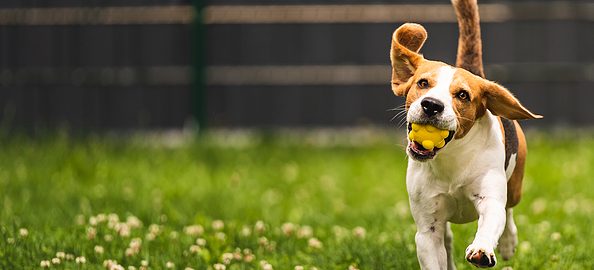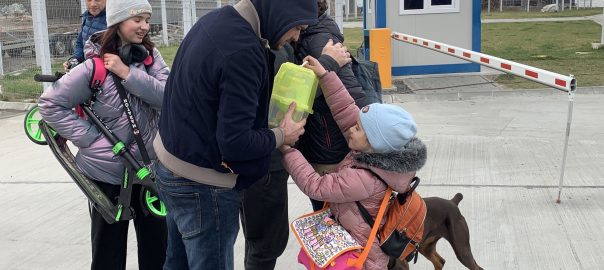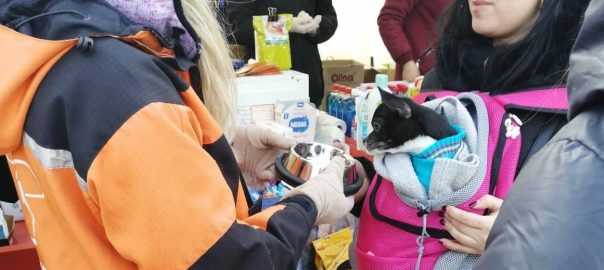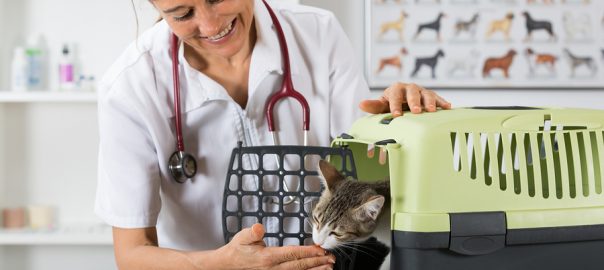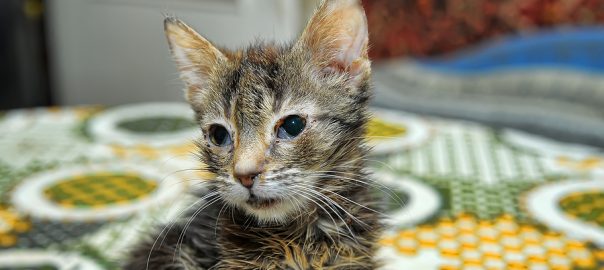It took a long time and a lot of rough travel to get there, but I jumped eagerly out of bed on my first morning in Galati, Romania. I was ready to see what I could do now and in the future to help both pets and people displaced by the Russian invasion of Ukraine and those on the ground helping them at the border and beyond.
I was in Romania representing the American Veterinary Medical Foundation, Fear Free, the World Small Animal Veterinary Medical Association, and World Vets, who had connected me with Alexandra Sava, from the family-run, non-governmental, non-profit Sava’s Safe Haven near Galati (savasafehaven.com).
Alex was our transportation and host for the day. In another article I’ll describe this angel-on-earth who is just one part of the most extraordinary family of pet rescuers I’ve ever met in a lifetime of loving pets and over four decades of veterinary practice and animal welfare work.
We left the gritty industrial town of Galati heading east to the border crossing between Romania and Ukraine where most of the people and pets fleeing war were arriving. To get there we had to take a dilapidated ferry across the Danube River. Forget the Viking Cruise images of the placid Blue Danube flowing past ancient castles and quaint villages with sheep mowing the grass. The river we crossed was brown and really choppy from high winds; the buildings on both sides of the ferry were dilapidated.
After crossing the river, we proceeded the last of the 25-mile journey on a curvy two-lane road to our final destination, the ferry crossing between Ismail, Ukraine, and Isaccea, Romania. Upon arrival we saw the real life example of the axiom, “It takes a village.” Many NGOs were present ranging from the mega-organizations such as the Red Cross and UNICEF, to dozens of names I didn’t recognize. Food booths were serving warm meals, snacks, and drinks. There was food, clothing, bedding, and baby and pet supplies, free for the taking from people wearing the smiles of service to those less fortunate.
There were swarms of police and border personnel moving around permanent buildings and makeshift portable buildings and tents. It was organized chaos between those serving a country and those serving fellow man in need.
There were medical facilities for both people and animals. including the small hotel room-sized blue tent housing the veterinary services. Opening the flap, I was met with a dozen smiles. There were veterinarians from England, Canada, the United States, and Romania. Lots of hugs and high fives all around.
The small tent, which was barely warmed by a small space heater, had a small exam table with a light above that was throwing out about the same light as an aging firefly. There was an adequate quantity of parasite control products, vaccines, microchips, basic medicines, carriers, leashes, collars, harnesses, as well as basic and therapeutic foods.
In talking my colleagues, some of whom had been on the front lines for five weeks and others who’d just arrived, I learned that day had been a slow day, as they’d only seen six cats. Over the last month they’ve served as many as 75 pets per day, and averaged about 30. Mihai Barbu, the head of Romanian border control at Isaccea, told me his prediction: “This is the calm before the storm.”
Checking the news from the Associated Press on my phone, I read reports of Russian cruise missile attacks on an Odessa oil refinery and fuel storage facilities. As the war in Ukraine moves from attacks around Kiev to the eastern and southern parts of Ukraine, local authorities are expecting massive waves of displaced pets and people fleeing Mariupol and Odessa to cross the Danube to safety in Romania. From the Ukrainian port city of Odessa on the Black Sea to the Romanian border where we were to visit is about 325 miles.
When the next ferry arrived it was carrying semi-tractor trailers, cars, cargo, and people. With temperatures in the low 50s with a fierce wind blowing across the Danube, I was bundled up in three layers and still cold. I watched as similarly bundled-up seniors, adults, children, toddlers, and babies in strollers got off the ferry. Very friendly Ukrainian professionals and volunteers like myself in orange vests greeted them warmly. They were immediately offered warm food, beverages, coats, and blankets.
I was drawn to one particular family. Mom was raven-haired Alexandra, holding the leash of a really happy two-year-old female Doberman named Homa.
The older daughter, Veronica, was around 13 years old and her backback had a clear bubble for a window, carrying her grey cat, Busja.
The ytounger daughter, Vasilisa, was about five, and she was carrying a clear, plastic container holding a hamster named Greicy (Gracy).
This family had fled their home in Kherson, Ukraine, approximately 220 miles from where we stood. I wrestled with Homa, tossed a tasty-treat into the backpack for Busja, the calmest cat I’ve ever seen, and just got down on bended knees and smiled at Greicy, who was frozen with fright.
Alexandra’s husband and father-in-law were waiting for them after they cleared customs and we stood back – but still in camera range – and watched a joyous, tear-filled reunion between two and four-legged family members. The wind must have blown something into my eyes.
In about 15 minutes, Alexandra brought Homa and Busja to the blue veterinary medical tent where we swarmed them. Knowing Fear Free techniques, we should have proceeded differently, but our thirst to help overwhelmed our training.
The vast majority of pets coming from Ukraine are unvaccinated and have both internal and external parasites. While Romania is a rabies-free nation, Ukraine is not, so unless pet parents can show a valid European pet passport (these are official documents that show microchip ID numbers, vaccination status, etc.), their pets must be vaccinated against rabies and quarantined for 21 days before they can be released. Since many people arriving don’t have places to stay, or must stay in places that don’t allow pets, facilities like Sava Pet Rescue must house them (free of charge) during quarantine.
Things are in flux at the border. SAVA has been there just about every other day delivering van or truck loads of dog and cat food to be taken to hungry shelter and family pets in Ukraine. In addition to food and treats, they’re delivering parasite control products, antibiotics, wound ointments, cat litter, kennels, blankets, toys – really everything people need to properly take care of their pets.
As recently as last week, two trucks holding about 700 dogs, arrived at the border crossing on the Danube at Ismail, Ukraine. Authorities said that they couldn’t bring them across (I’m sure you’ve read the reports of shelter dogs in Ukraine dying from caretakers not being able to reach them due to Russian shelling or bombing; or tragically, people killed trying to get to these pets to help).
The trucks waiting out of sight for the next two days, trying to get someone to turn a blind eye and let them cross to access the help awaiting just a few hundred yards across the river. Finally they had to turn back. Currently five pets per person are allowed into Romania; Alexandra from SAVA and my colleagues in the blue tent told me “clown car” stories of four people and 20 pets driving up the ramp off the ferry in one small car!
It was getting late and we knew we had a four-hour drive on Friday to the town of Iasi (pronounced Yessh), where we are to meet with the dean, faculty, and students of one of the four colleges of veterinary medicine in Romania. As I was walking from the blue tent to the van, I looked to my left and watched a moving line of pets and people holding hands walking toward a group of vehicles.
I am covering my own expenses on this trip, but all these programs desperately need your support. If you can, please donate at the links below.
World Vets: Free Veterinary Care
American Veterinary Medical Foundation: Veterinary Care
Sava’s Safe Haven: Comprehensive Care & Services on the Border
Photo from left to right: Grandpa, Veronica with the cat backpack, Mom, Homa, Dad, and on the far right, little Vasilisa with the hamster cage in her pink-gloved right hand.
